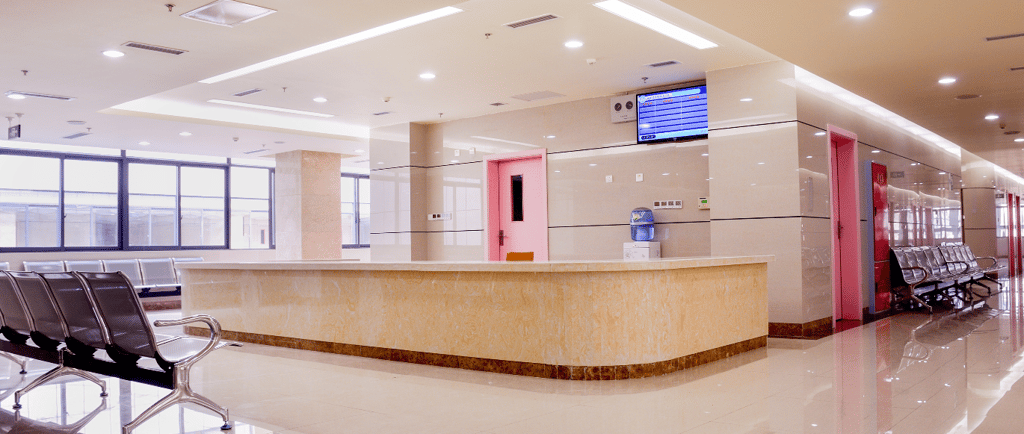Enhancing Hospital Design with Lighting and Colour
Explore the transformative power of lighting and colour in hospital design with our latest blog post, 'Enhancing Hospital Design with Lighting and Colour: Key Learnings.' Delve into the crucial role of these elements in creating healing environments, backed by principles, case studies, and expert insights. From the impact on patient outcomes to common design mistakes and exemplary practices, this comprehensive guide is a must-read for architects, designers, and anyone passionate about optimizing healthcare spaces. Discover how the right lighting and colour choices can positively influence well-being, reduce stress, and enhance recovery in hospital settings. Uncover the secrets to successful hospital design that prioritizes the comfort and healing of both patients and staff.
INTERIOR DESIGN


Enhancing Hospital Design with Lighting and Colour
Outline
Introduction
Importance of hospital design
Role of lighting and colour
The Impact of Lighting in Hospital Design
Visual lightness for spaciousness
Use of natural light for circadian rhythms
Task lighting for visual acuity
Dimmable lighting for relaxation and sleep
Utilizing colour temperature for desired effects
Colour Psychology in Hospitals
Creating a sense of calm, comfort, and security
Colour contrast for wayfinding and navigation
Establishing identity and community through colour
Ensuring privacy and confidentiality with colour
Incorporating nature and the outdoors
Case Studies: Exemplary Hospital Designs
Child-friendly environments with vibrant colours
Supportive spaces for cancer patients and families
Common Mistakes in Hospital Lighting and Colour Design
Avoiding harsh or fluorescent lighting
Balancing the use of colour
Considering patient and staff preferences
How Lighting and Colour Impact Patient Outcomes
Mood, circadian rhythms, and sleep patterns
Implications for pain management, stress reduction, and healing
Designing Hospitals with Lighting and Colour
Creating a healing environment
Prioritizing patient and staff well-being
Enhancing wayfinding and navigation
FAQs on Hospital Design, Lighting, and Colour
Impact of lighting and colour on patient outcomes
Common mistakes in hospital design
Strategies for architects and designers
Conclusion
The crucial role of lighting and colour in hospital design
Creating positive and healing experiences
Introduction:
Hospital design significantly influences patient outcomes and experiences. The incorporation of effective lighting and colour schemes can transform healthcare environments into spaces that promote well-being, reduce stress, and enhance recovery. In this blog post, we will delve into the pivotal role of lighting and colour in hospital design, exploring key principles, case studies, and common mistakes.
1. The Impact of Lighting in Hospital Design
The design principles for hospital lighting are instrumental in creating a conducive atmosphere.
Visual Lightness for Spaciousness
Creating an appearance of "visual lightness" fosters a sense of spaciousness, alleviating stress for patients and staff alike.
Natural Light for Circadian Rhythms
Leveraging natural light not only reduces energy costs but also promotes healthy circadian rhythms, positively influencing mood and recovery.
Task Lighting for Visual Acuity
Strategic use of task lighting enhances visual acuity, minimizing eye strain and creating a more comfortable environment for patients.
Dimmable Lighting for Relaxation
Integrating dimmable lighting allows for the creation of a relaxing atmosphere, vital for promoting sleep and overall well-being.
Colour Temperature for Desired Effects
Choosing the right colour temperature contributes to the overall ambiance, whether aiming for warmth or coolness based on the intended effect.
2. Colour Psychology in Hospitals
Understanding colour psychology is paramount in creating a healing environment within hospitals.
Calm, Comfort, and Security
Colour choices can evoke feelings of calm, provide comfort, and enhance the sense of security for patients during their hospital stay.
Colour Contrast for Wayfinding
Strategic use of colour contrast aids in wayfinding and navigation, reducing confusion for both patients and visitors within the hospital space.
Identity and Community Through Colour
Colour can be a powerful tool in establishing the identity of different hospital areas and fostering a sense of community among patients and staff.
Privacy and Confidentiality
Appropriate colour choices contribute to creating private and confidential spaces, addressing the sensitive nature of healthcare environments.
Nature and the Outdoors
Incorporating colours reminiscent of nature and the outdoors can have a therapeutic effect, connecting patients with a sense of tranquility.
3. Case Studies: Exemplary Hospital Designs
Several hospitals have successfully implemented innovative design practices.
Child-Friendly Environments
Bright and bold colour palettes create a playful and welcoming atmosphere for children, positively impacting their hospital experience.
Supportive Spaces for Cancer Patients
Warm and comforting colours, coupled with natural materials and soft lighting, establish a homely and supportive environment for cancer patients and their families.
4. Common Mistakes in Hospital Lighting and Colour Design
Avoiding common mistakes is crucial for effective hospital design.
Harsh or Fluorescent Lighting
Using harsh or fluorescent lighting can contribute to discomfort and stress for patients and staff.
Balancing Colour Usage
Finding the right balance in colour usage is essential, as too much or too little can have unintended consequences.
Considering Preferences
Not taking into account the preferences of patients and staff can result in a less accommodating environment.
5. How Lighting and Colour Impact Patient Outcomes
The impact of lighting and colour extends beyond aesthetics.
Mood, Circadian Rhythms, and Sleep Patterns
These factors can significantly influence patient outcomes, affecting pain management, stress levels, and overall healing.
6. Designing Hospitals with Lighting and Colour
Creating a Healing Environment
Prioritizing lighting and colour in hospital design contributes to the creation of a healing environment that supports the well-being of patients and staff.
Enhancing Wayfinding and Navigation
Strategic use of lighting and colour can enhance wayfinding, making the hospital experience more seamless for patients and visitors.
7. FAQs on Hospital Design, Lighting, and Colour
Q: How do lighting and colour impact patient outcomes in hospitals?
A: Lighting and colour influence mood, circadian rhythms, and sleep patterns, affecting pain management, stress reduction, and overall healing.
Q: What are common mistakes in hospital lighting and colour design?
A: Common mistakes include using harsh lighting, imbalanced colour usage, and not considering the preferences of patients and staff.
Q: How can designers and architects use lighting and colour in hospital projects?
A: Designers can create a healing environment, enhance wayfinding, and prioritize patient and staff well-being through thoughtful use of lighting and colour.
8. Conclusion
In conclusion, the careful consideration of lighting and colour is pivotal in hospital design, influencing the overall experience for patients and staff. By adhering to design principles, learning from case studies, and avoiding common mistakes, hospitals can create positive and healing environments.
9. FAQs
Q: How long does it take to see the impact of lighting and colour changes in hospitals?
A: The impact can be relatively quick, with changes in mood and stress levels observed within a short period. However, long-term effects on healing may take time.
Q: Can hospitals use artwork as part of their colour design?
A: Yes, incorporating artwork can be an effective way to introduce colours and create a visually appealing and therapeutic environment.
Q: Are there specific guidelines for lighting and colour in pediatric hospital design?
A: Yes, pediatric hospital design often involves vibrant and playful colours to create a child-friendly and welcoming atmosphere.
Q: How can hospitals ensure inclusivity in their colour choices?
A: Hospitals can consider culturally diverse colour schemes and seek input from patients and staff to ensure inclusivity and sensitivity to various preferences.
Q: Is it possible to retrofit existing hospitals with improved lighting and colour schemes?
A: Yes, it is possible to retrofit existing hospitals, but careful planning and consideration of the unique challenges of each space
Other articles of your interest
Are Carbon Neutral Buildings Expensive?
Best Interior Design Tips to Decorate Your Home
10 Best Architecture Design Tips for Students and Professionals
10 Must-Have Skills for Modern Architects and Interior Designers
